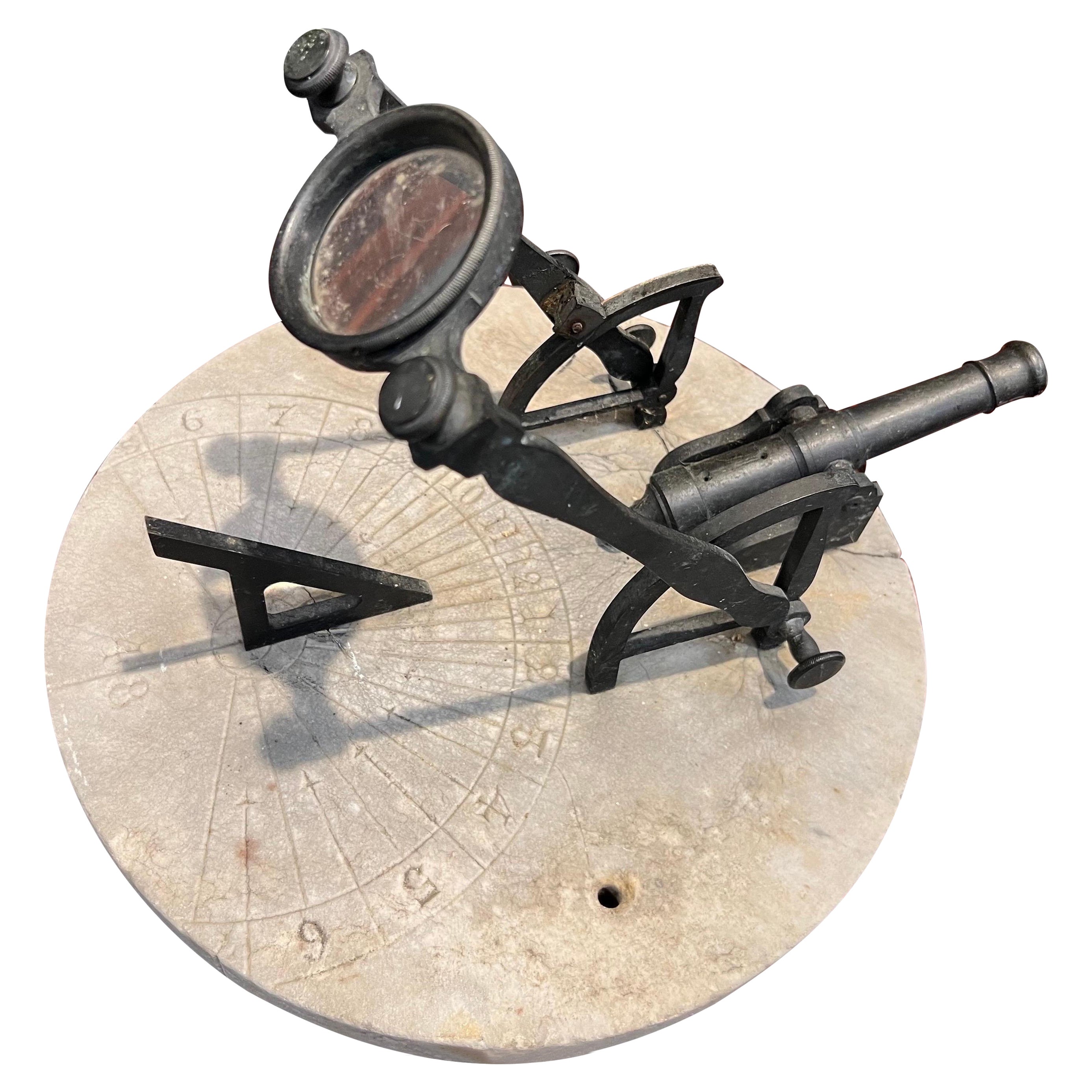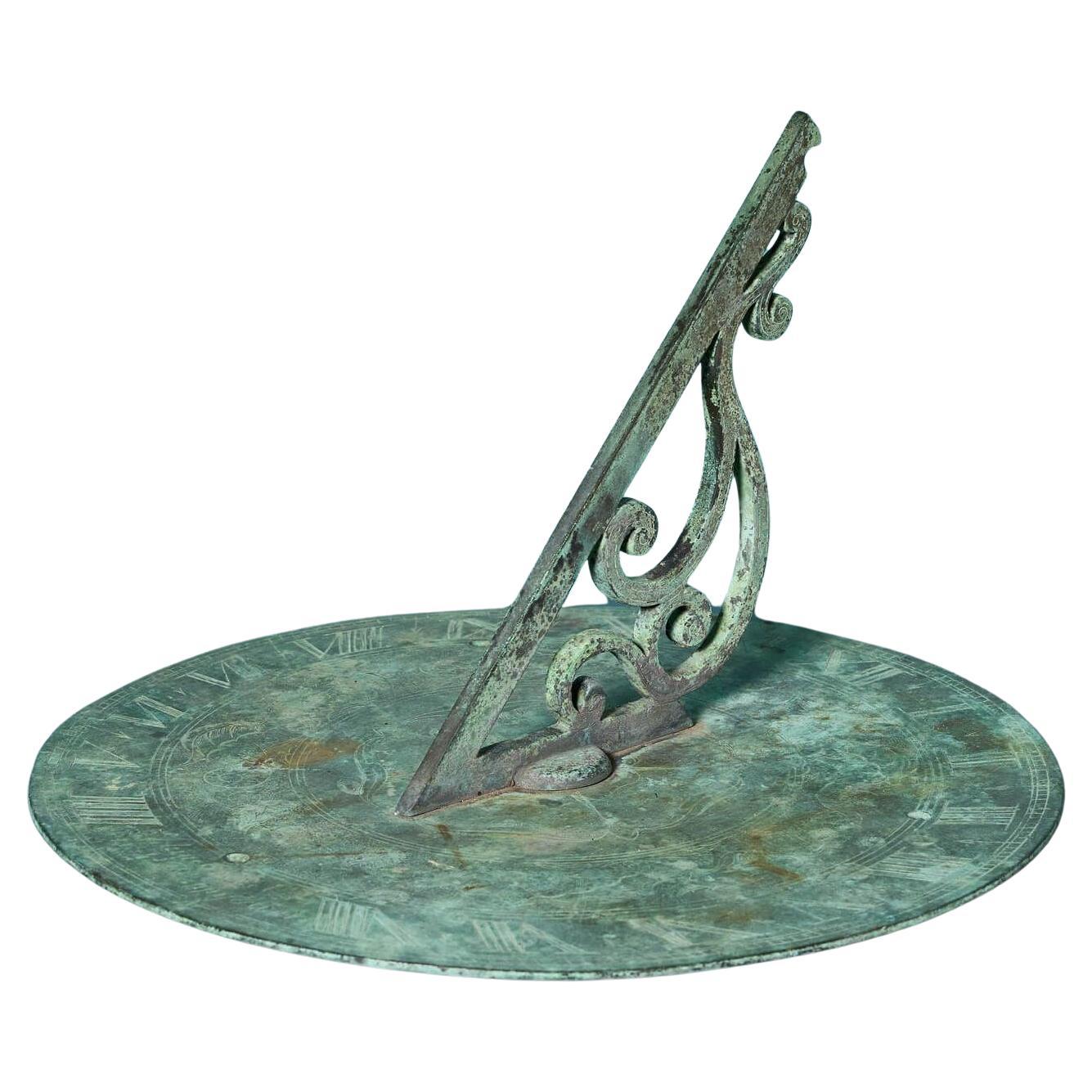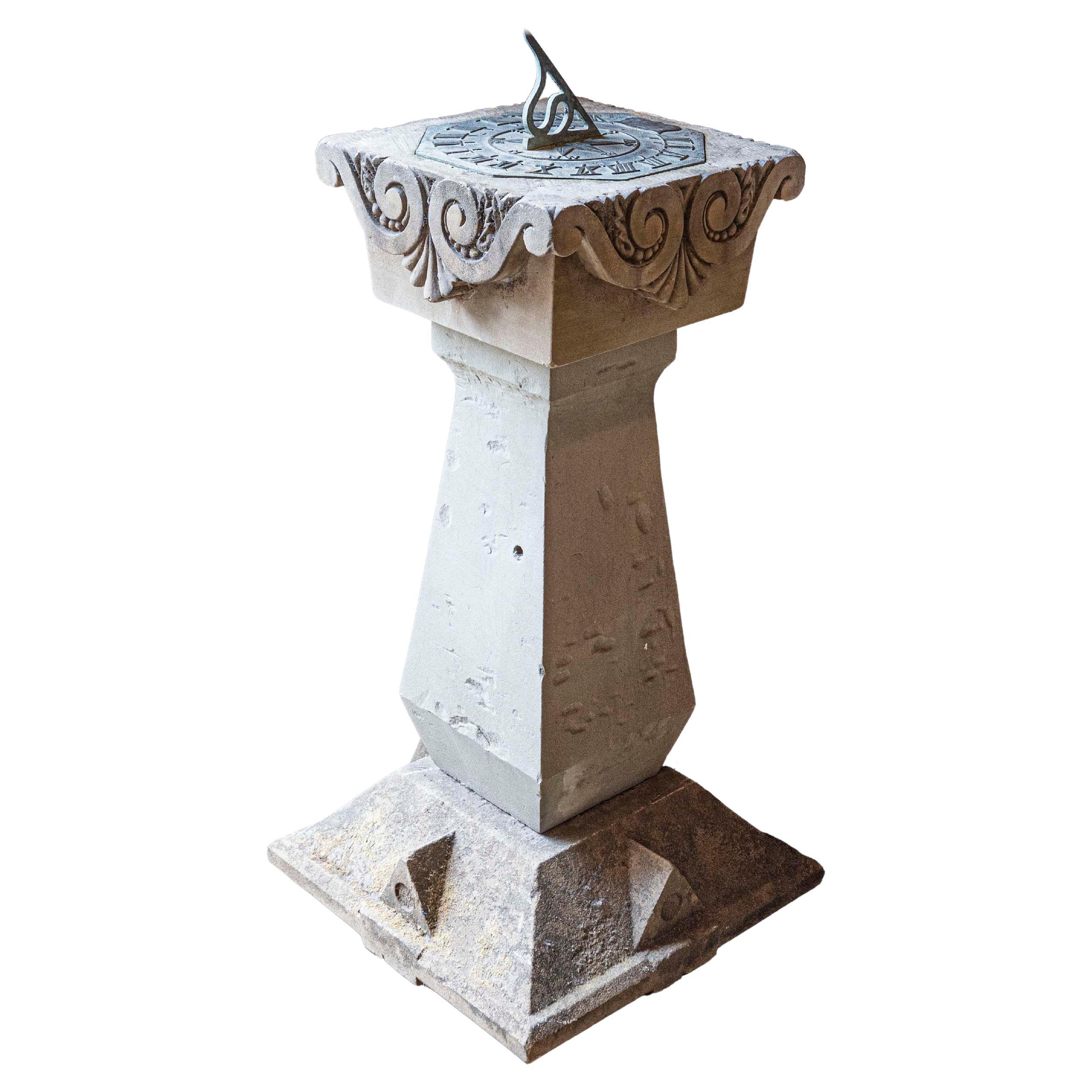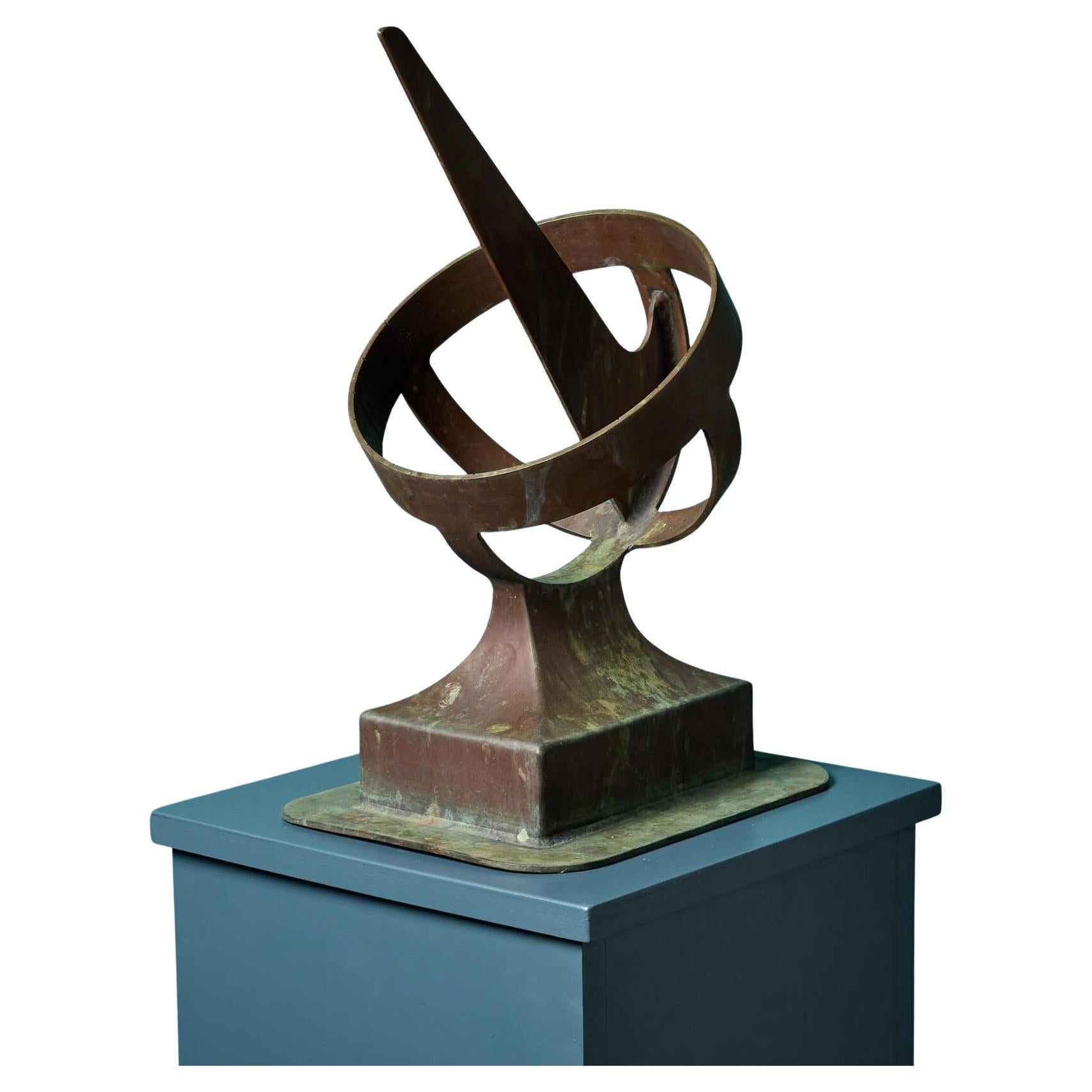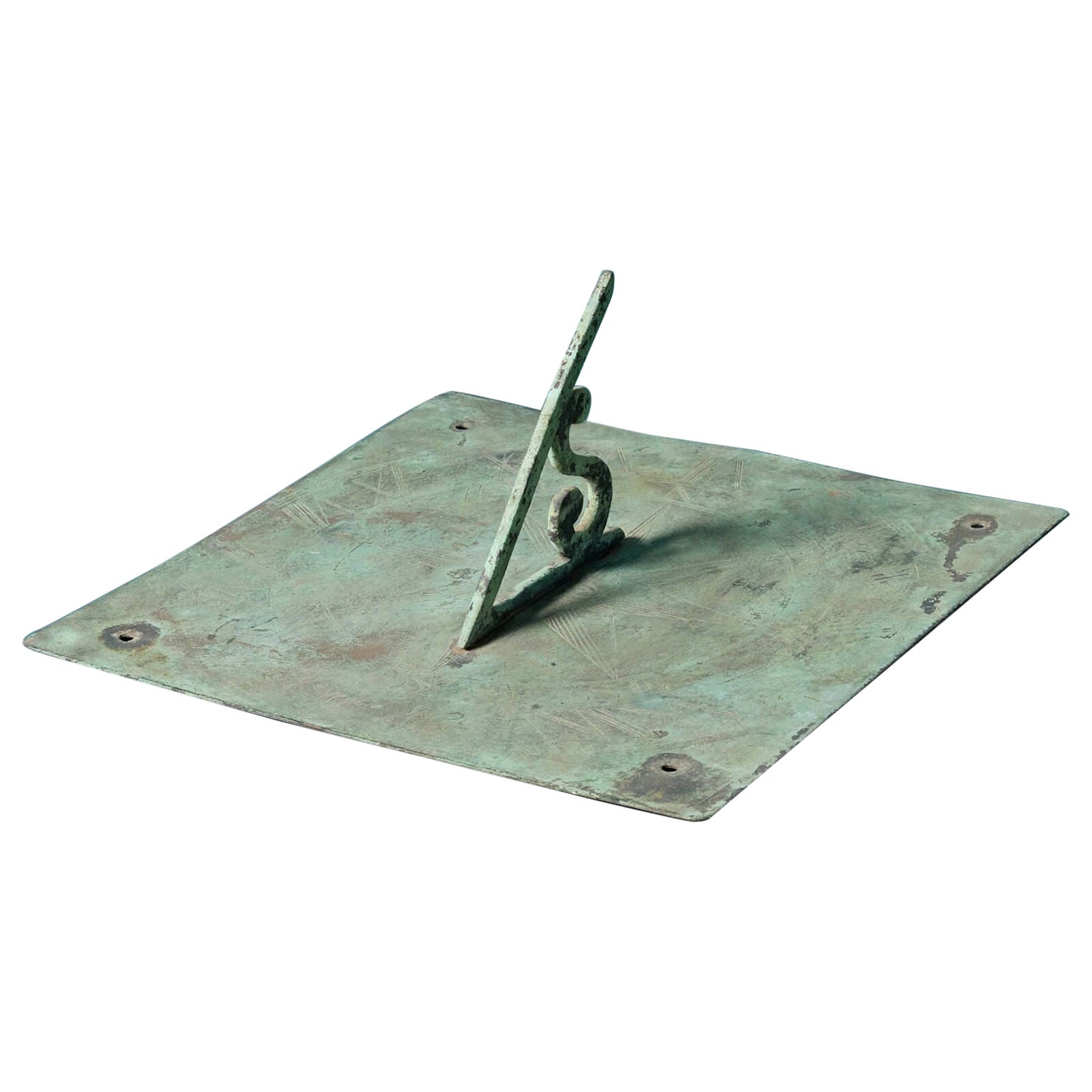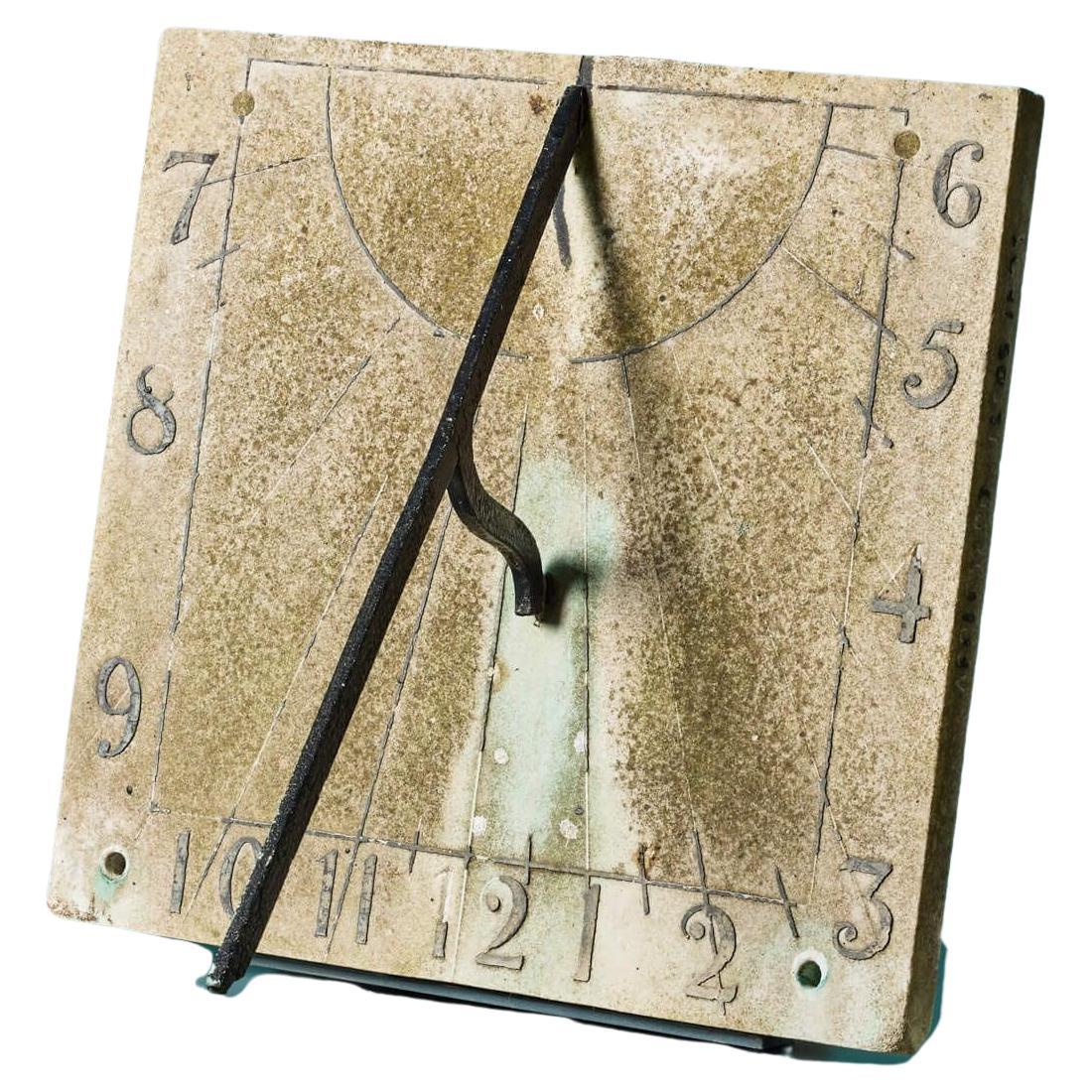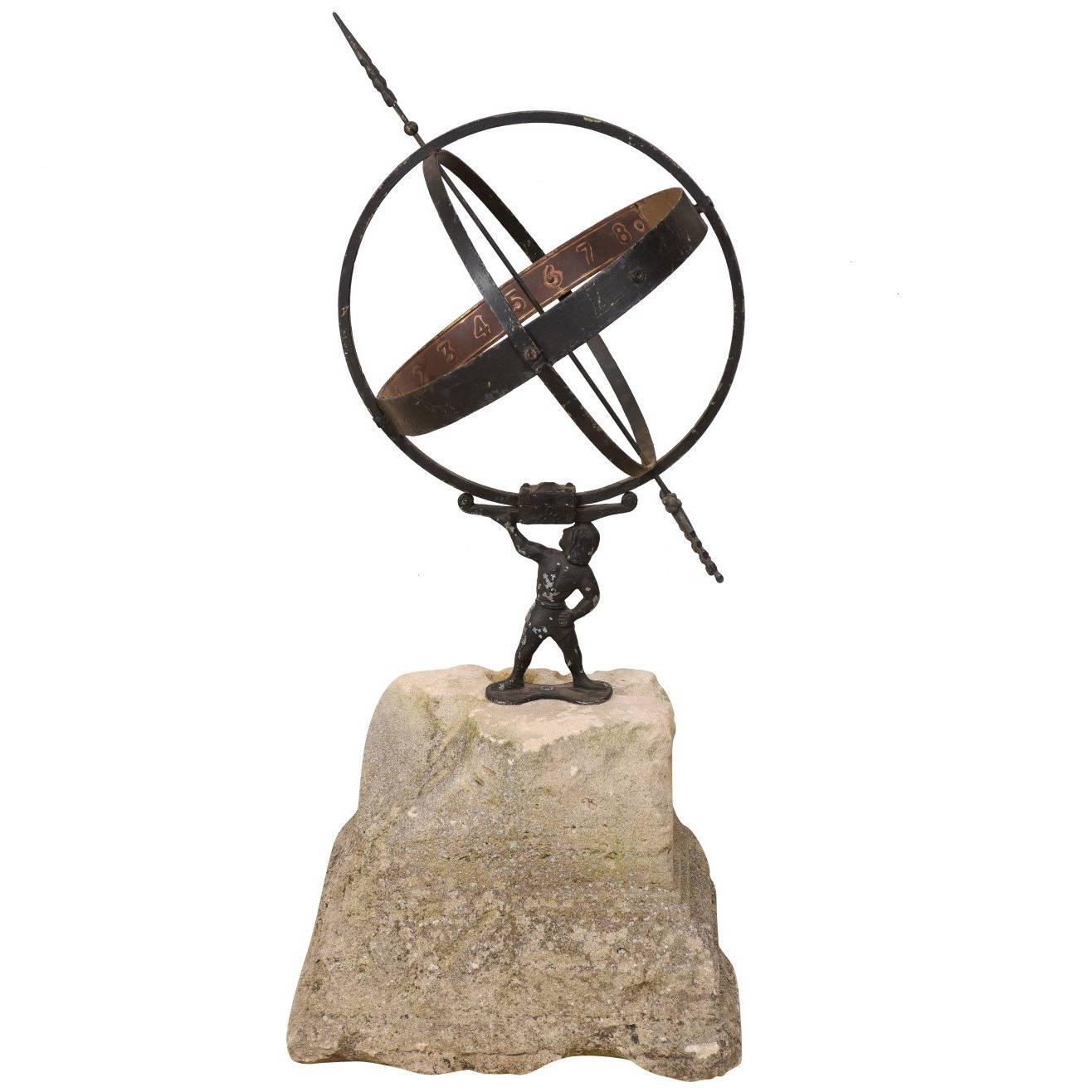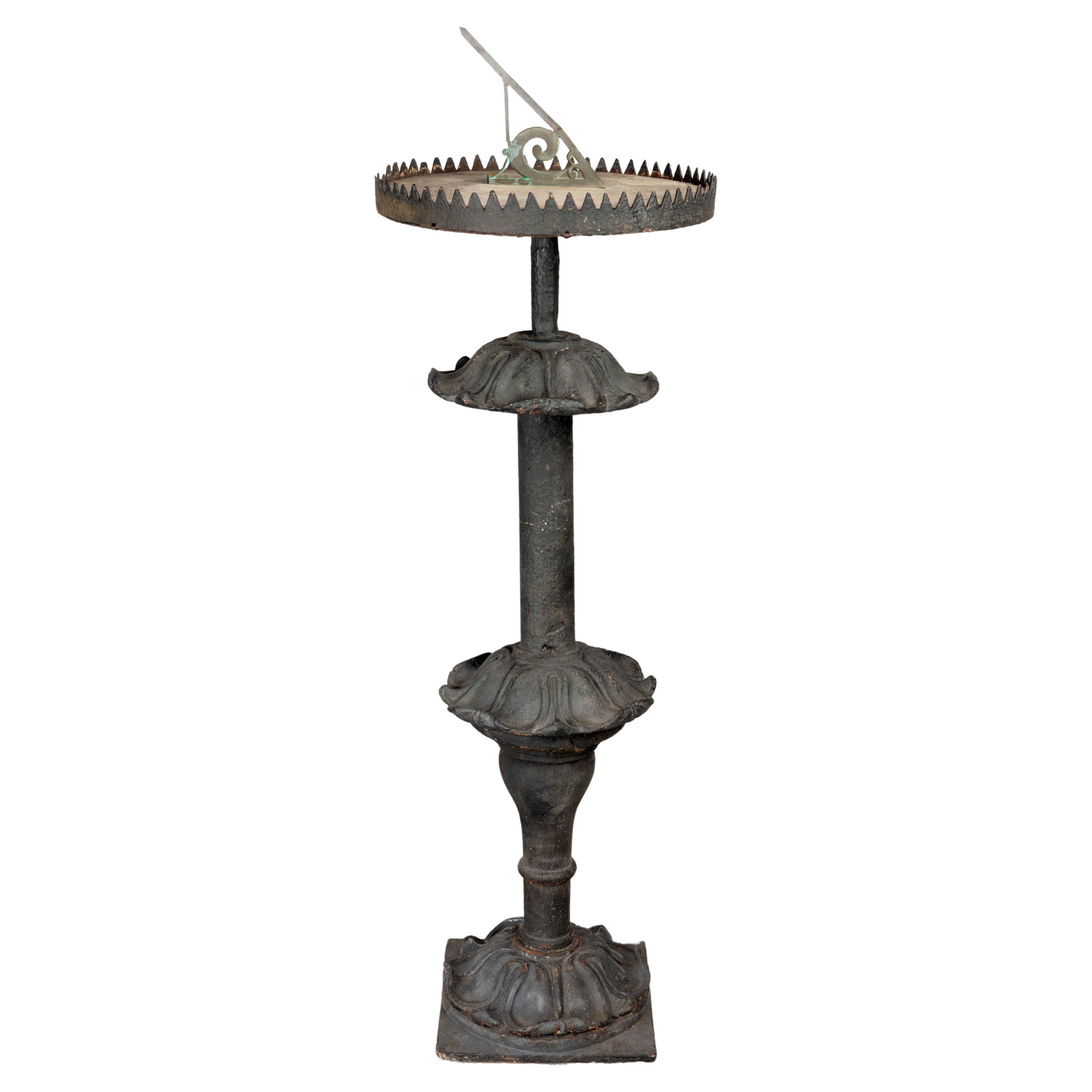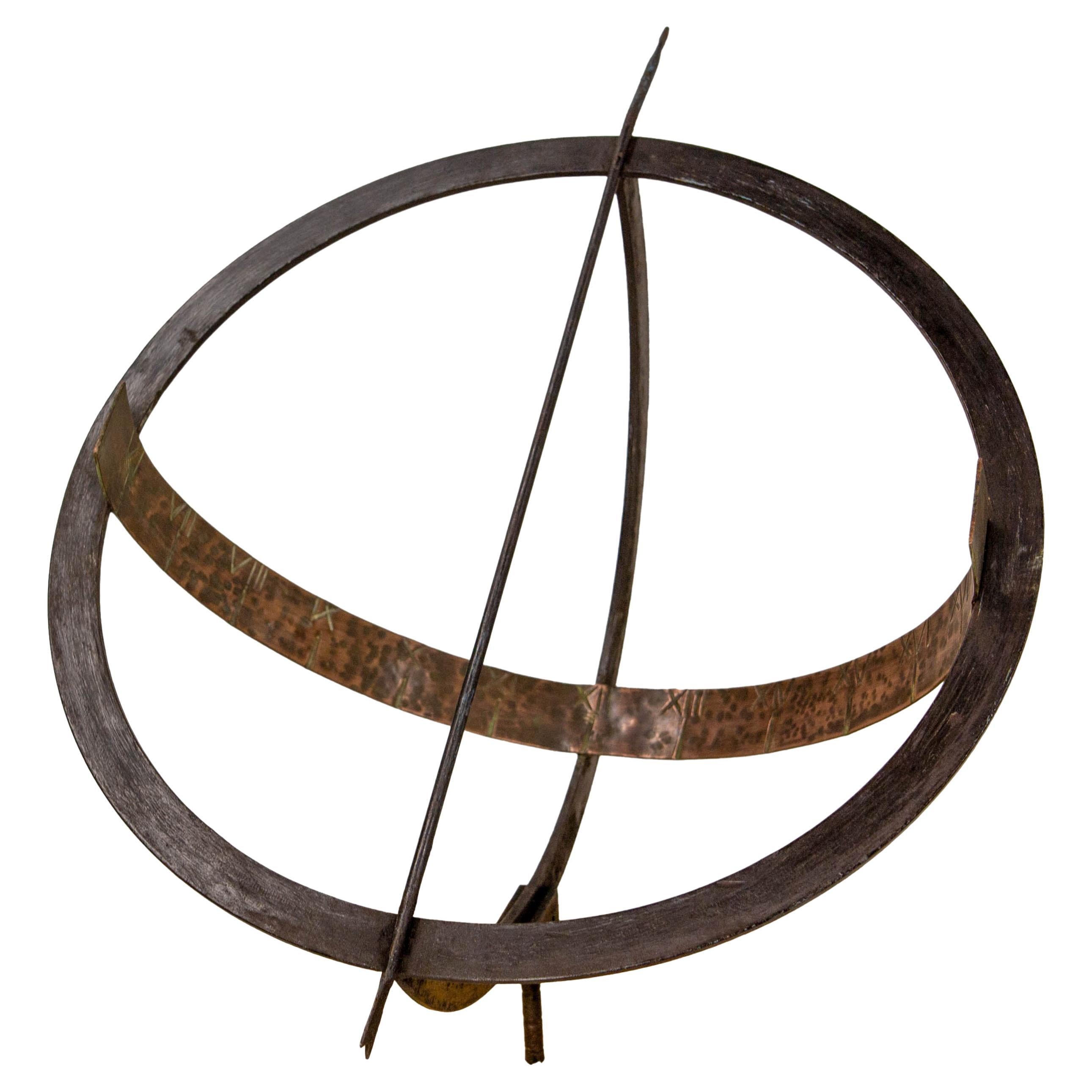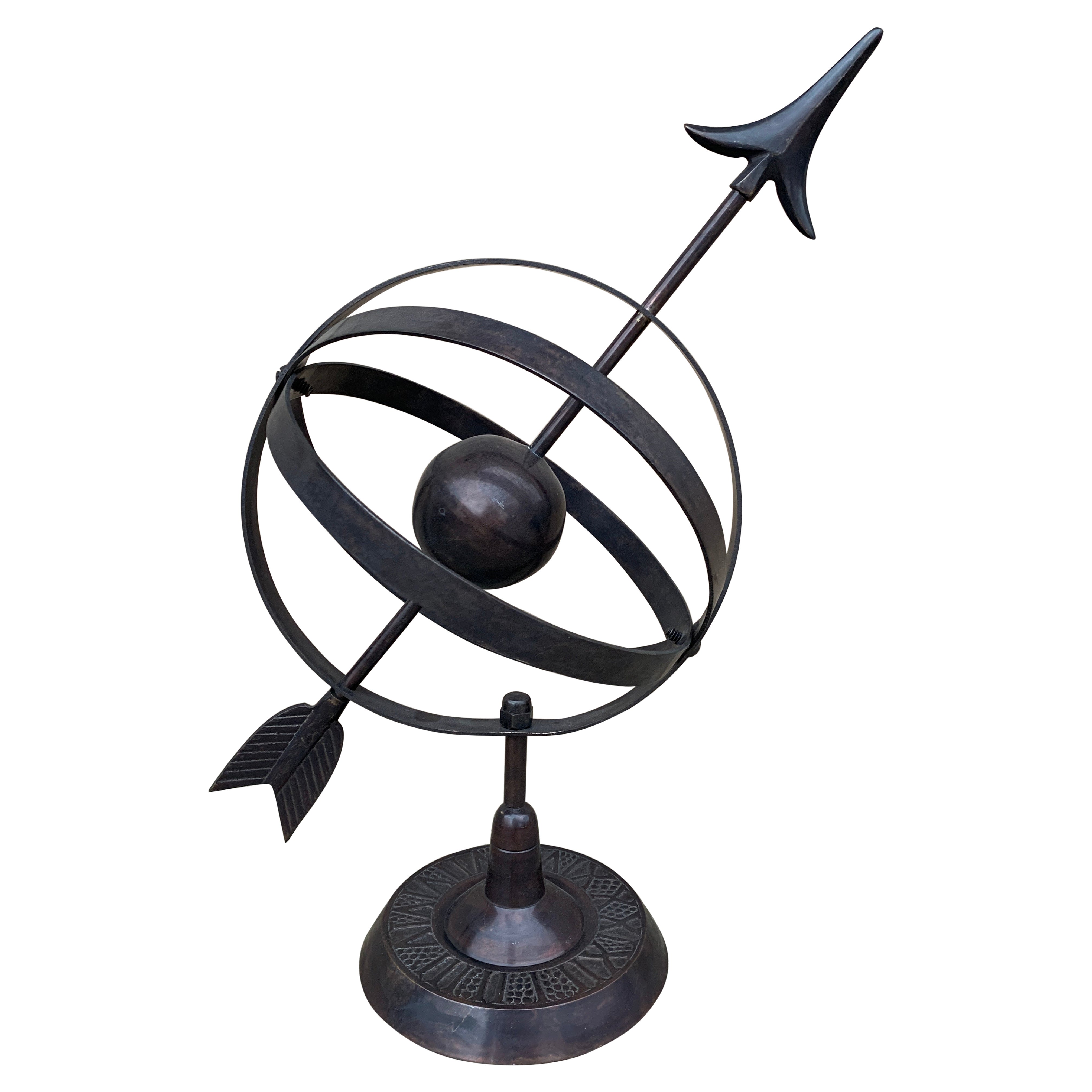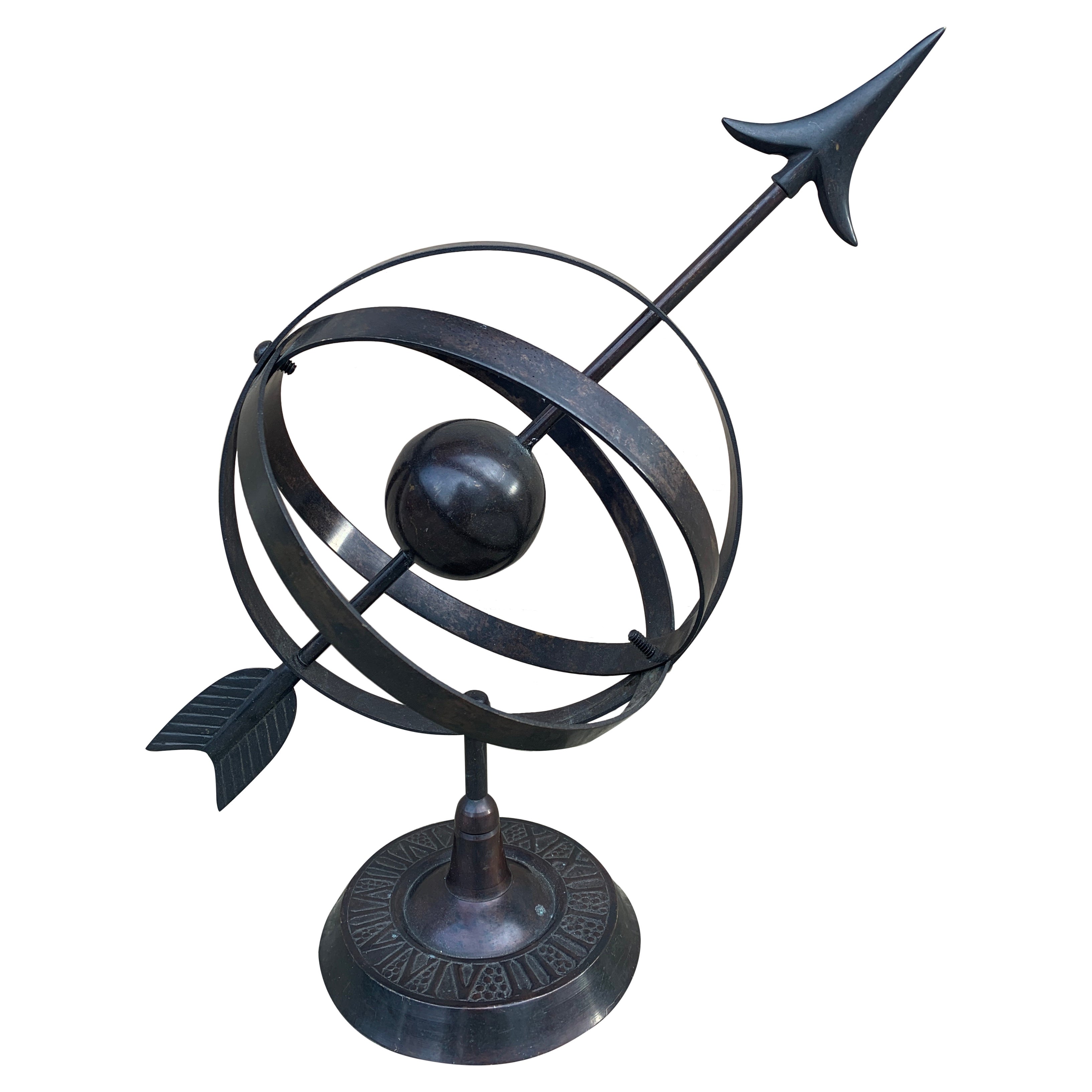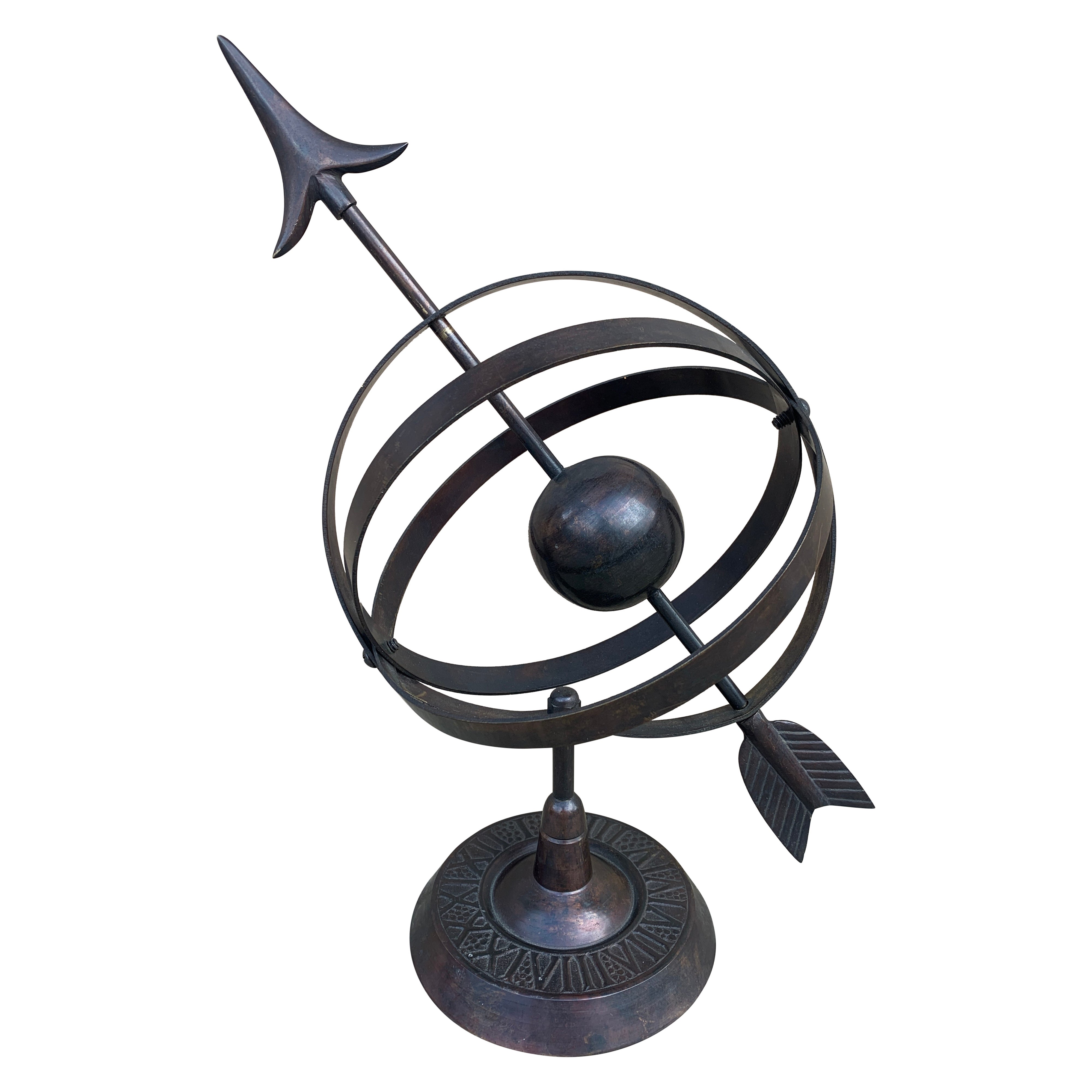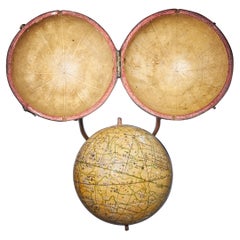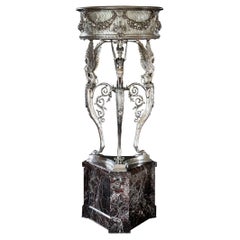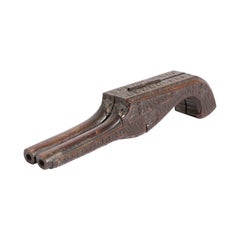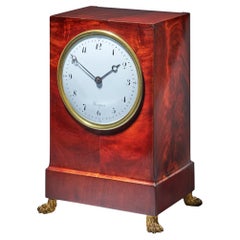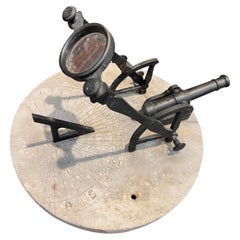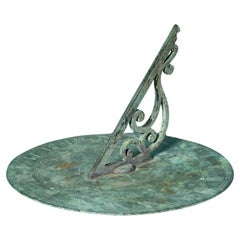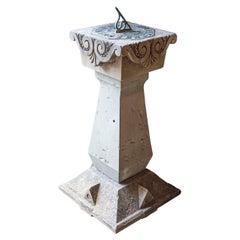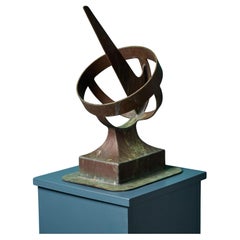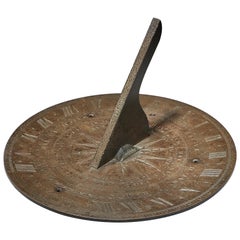
Early 19th Century English Bronze Horizontal Sundial by Cary of London
View Similar Items
Want more images or videos?
Request additional images or videos from the seller
1 of 6
Early 19th Century English Bronze Horizontal Sundial by Cary of London
$3,375.65List Price
About the Item
- Creator:Cary (Clockmaker)
- Dimensions:Height: 6.89 in (17.5 cm)Diameter: 12.01 in (30.5 cm)
- Style:George III (Of the Period)
- Materials and Techniques:
- Place of Origin:
- Period:
- Date of Manufacture:1800-1825
- Condition:Wear consistent with age and use.
- Seller Location:Oxfordshire, GB
- Reference Number:1stDibs: LU4936221551692
About the Seller
5.0
Recognized Seller
These prestigious sellers are industry leaders and represent the highest echelon for item quality and design.
1stDibs seller since 2019
24 sales on 1stDibs
Typical response time: A week
Associations
LAPADA - The Association of Arts & Antiques Dealers
Authenticity Guarantee
In the unlikely event there’s an issue with an item’s authenticity, contact us within 1 year for a full refund. DetailsMoney-Back Guarantee
If your item is not as described, is damaged in transit, or does not arrive, contact us within 7 days for a full refund. Details24-Hour Cancellation
You have a 24-hour grace period in which to reconsider your purchase, with no questions asked.Vetted Professional Sellers
Our world-class sellers must adhere to strict standards for service and quality, maintaining the integrity of our listings.Price-Match Guarantee
If you find that a seller listed the same item for a lower price elsewhere, we’ll match it.Trusted Global Delivery
Our best-in-class carrier network provides specialized shipping options worldwide, including custom delivery.More From This Seller
View AllRare George III Celestial Pocket Globe by Cary, London
By Cary
Located in Oxfordshire, United Kingdom
A fine and rare 3" celestial pocket globe by G & W Cary, Strand, London circa 1791, housed in its original sharkskin case.
A companion globe to terrestrial globes of this type we...
Category
Antique Late 18th Century English George III Aviation Objects
Materials
Plaster
19th Century Silvered Bronze Athénienne Jardinière by Ferdinand Barbedienne
By Ferdinand Barbedienne
Located in Oxfordshire, United Kingdom
A French silvered-bronze athénienne by Ferdinand Barbedienne, Paris, last quarter 19th century with a revolving liner, the frieze applied with bucrania suspending ribbon-tied berried laurel swags above a border of bellflowers on a stippled ground above three seated female sphinxes issuing stylised foliage and scrolls on lion monopodia cast with the mask of Hercules, scrolling foliage and anthemions joined by stretchers, raised on a concave-sided triform marble base on a further thin silvered-bronze base, inscribed to the tripod base 'F. BARBEDIENNE'
Measures: 103.3cm. high, 41.5cm. diameter; 3ft. 4 3/8 in, 1ft. 4 1/4.
This impressive athénienne is a key reminder of the longevity of a particular model and design’s success from Antiquity through to the 19th century and up until this day. Typically known as the ‘Trépied du Temple d’Isis’, this athénienne is designed after the Roman antique originally found at Pompeii and now at the Museo Archeologico Nazionale, Naples (fig.1). From being for example an inspiration for the baptismal font of Napoléon’s son in 1811, this model was the inspiration to many highly skilled makers throughout the 19thcentury such as the Manfredini brothers from Milan and of course the Parisian well-established bronze founder Ferdinand Barbedienne who executed the present example.
The Temple of Isis was a Roman temple dedicated to the Egyptian goddess Isis and was among one of the first discoveries during the excavation of Pompeii in 1764. Certainly considered as one of the most elegant examples of antique tripods, the existence of this model was then popularized to the rest of Europe via prints, one of the first being by Giovanni Battista Piranesi in 1779. This type of tripod was also popularised by an engraving in C. Percier and P. Fontaine’s, Receuil de Décorations Intérieures of 1801. Interestingly, there is also a watercolour now in the Musée Carnavalet, Paris, showing this type of tripod displayed at the 1801 Exposition des Produits de L’Industrie in the Louvre.
The passion for Greek and Roman Art in the 19th century.
The discovery of Pompeii and Herculaneum around the middle of the 18th century gave rise to a new passion for Antiquity and the excavated masterpieces renewed the repertoire of fine and decorative arts and served as models for Neoclassicism. Members of the aristocracy as well as connoisseurs, particularly in England, completed their education by undertaking a ‘Grand Tour’ of Italy and often fell victim to the recently unearthed Greek and Roman artefacts...
Category
Antique 19th Century French Grand Tour Planters, Cachepots and Jardinières
Materials
Marble, Silver Plate, Bronze
Fine and Rare Early 19th Century Carved Bootjack in the Form of a Pistol
Located in Oxfordshire, United Kingdom
A fine and rare !9th Century hand carved antique treen bootjack, to remove riding boots, in the unusual form of a pistol.
This is a rare find and unfolds to form a bootjack with be...
Category
Antique 19th Century Antiquities
Materials
Beech
19th-Century Flame Mahogany Mantel Clock by Breguet Raised by Lion Paw Feet
By Breguet a Paris
Located in Oxfordshire, United Kingdom
An extremely rare mantel clock with a figured mahogany-veneered case by A-L Breguet
Abraham-Louis Breguet (1747-1823), who was of Swiss origin, is undoubtedly the most celebrated clockmaker of the late eighteenth and early nineteenth centuries in France. He is responsible for the invention of the self-winding watch, the tourbillon and the sympathetic watch ( a watch that is placed in a cradle of a special clock. It is then linked by means of a pin fixed behind the clock dial. Built into the motion work which, when released by the clock, automatically sets the hands to the clock's time as well as correcting the watch's regulator necessitated by any degree of inaccuracy registered at the moment of synchronisation) and many other horological improvements and developments. Around the year 1807 Breguet brought in his son, Antoine-Louis (born 1776), as a business partner, and from this point, the firm became known as Breguet et Fils. Breguet had previously sent his son to London to study with the great English chronometer maker John Arnold...
Category
Antique Late 18th Century French Empire Mantel Clocks
Materials
Brass
Fine 19th century French ormolu mantel clock (pendule) by Leroy a Paris, c. 1825
By LeRoy
Located in Oxfordshire, United Kingdom
A most beautiful French ornolu mantel clock by Leroy à Paris
A lovely French late Empire/early Charles X mantel clock with an ormolu case, c. 1825. The ormolu brass case depicts a celebration of Science and Learning. It is dominated by a rectangular superstructure containing the movement, flanked by an engine-turned column with a celestial globe on top on the left and an elegant lady reading a book on the right. The superstructure is surmounted by a bookcase and a bust of Socrates...
Category
Antique Early 19th Century French Empire Mantel Clocks
Materials
Brass, Ormolu
Striking 19th Century Carriage Clock with a Gilt-Brass Corniche Case by Grohé
Located in Oxfordshire, United Kingdom
Striking carriage clock with a gilt-brass corniche case by Grohé, circa 1880.
A most attractive eight-day striking carriage clock, signed on...
Category
Antique 19th Century French Neoclassical Carriage Clocks and Travel Clocks
Materials
Brass
You May Also Like
19th Century Solar Signal Cannon on Marble Sundial
Located in Richmond, VA
Incredibly cool 19th century solar powered signal canon marble sun dial base. This signal cannon can be set to ignite with the sun through the attached magnifying glass- which can be...
Category
Antique 19th Century Garden Ornaments
Materials
Marble, Iron
Large 19th Century English Bronze Verdigris Sundial Plate
Located in Wormelow, Herefordshire
A large 19th century English bronze round sundial plate with Verdigris finish in very good condition, circa 1870.
Made in bronze, this horizontal sundial plate has stood the test of...
Category
Antique Mid-19th Century English Victorian Sundials
Materials
Bronze
English Late 19th Century Sundial with Carved Limestone and Bronze Top
Located in Atlanta, GA
An English sundial from the late 19th century, with carved limestone and bronze top. This English sundial features an obelisk-shaped base, raised on a pyramidal plinth, with cut-off ...
Category
Antique Late 19th Century English Sundials
Materials
Sandstone, Bronze
English Mid Century English Bronze Sundial
Located in Wormelow, Herefordshire
An antique mid century modern English bronze sundial.
Suitable for interior and exterior use, this sundial has an impressive sculptural quality with a robust form, elongated gnome a...
Category
Mid-20th Century English Mid-Century Modern Sundials
Materials
Metal, Bronze
Antique English Verdigris Bronze Sundial Plate
Located in Wormelow, Herefordshire
An antique English bronze sundial plate with a character Verdigris finish dating from the mid 19th century. This large horizontal sundial plate is a beautiful, aged addition to a gar...
Category
Antique Mid-19th Century English Georgian Sundials
Materials
Metal, Bronze
Antique 19th Century Square Marble Sundial
Located in Wormelow, Herefordshire
An antique 19th century square marble sundial dating to circa 1893. This Victorian wall mounted sundial stands out with its black painted iron gno...
Category
Antique Late 19th Century English Victorian Sundials
Materials
Stone, Marble, Iron
Recently Viewed
View AllMore Ways To Browse
Horizontal Clock
Antique Bronze Sundial
Garden Sundials
Antique Sundial
Vintage Garden Sundial
Armillary Sundials
Pierce Arrow
Vintage Sundials
Antique Bronze Sundial
Antique Stone Sundial
Vintage Brass Garden Sundial Sundials
Cast Iron Sundial
Cannon Sundial
Lead Sundial
Sundial Clock
Antique Cast Iron Sundial
Antique Sun Dial
Antique Armillary Sphere Sundial
